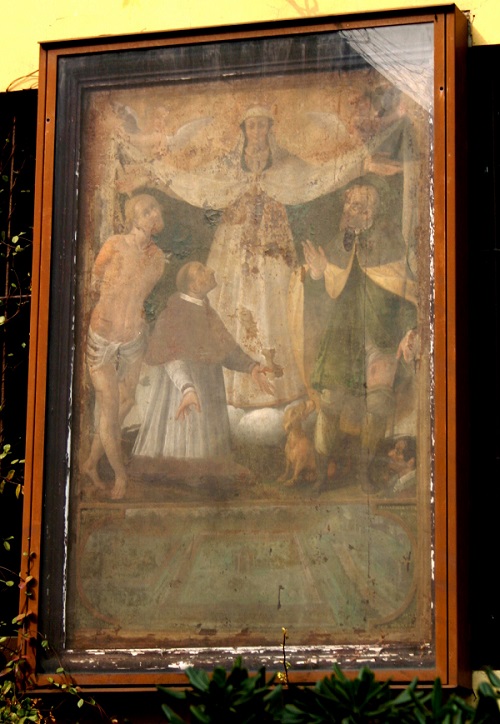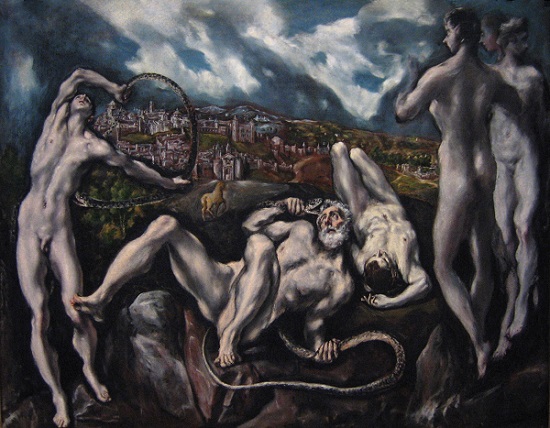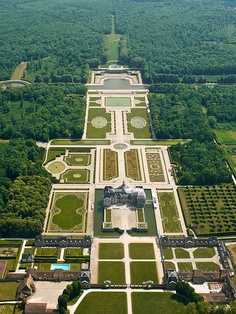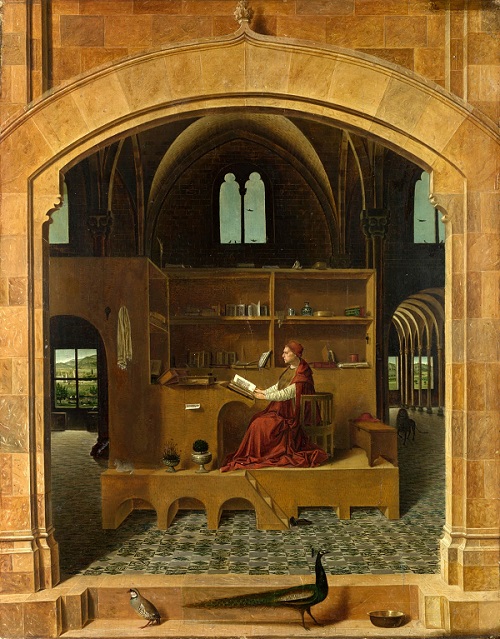Standing just a few steps from the Church of Santa Maria dei Miracoli, the Façade of Palazzo Bembo-Boldù is decorated with a very distinctive sculpture: a life-size figure of a hairy man holding a round shield adorned with the Sun. This pelt-covered figure us a rare depiction of Homo Silvanus, the “Man of the Forests”, a primitive who, like Adam, did not know sin because he lived in remote forests during the earliest ages of the world. Symbolizing the innocence of feelings, this was a figure who rejected a world of falsity, lies and cruelty (of which he may perhaps have been the victim). At the same time, however, this “Man of the Forests” also embodied the dark and violent side of each of us, symbolizing that psychological and sexual perversion which, in Christian iconography, is depicted by the satyr.
Here this idealisation of Primordial Man is associated with the Sun, the “king” which nourishes the natural world. As such, he reminds us of the “savage” purity of humankind in the Garden of Eden (the original Paradise).
In Ancient Rome, Silvanus was the god of the forests (silvae). He was said to be one of the sons of Saturn or of Faunus (Saurn’s grandson), with whom he was often identified. Just like Faunus – the god of shepherds – Silvanus was a purely Roman god. The guardian of the forests, he was also apparently the first to permit a separation of the countryside into private property. In this sense, he evokes the establishment of the first rural communities, where religion was based upon the cycle of seasons (determined by Saturn, the god of Time). Traces of this ancestral paganism can still be found in various practices of ‘popular religion’ throughout Europe.
Whilst an image of Silvanus was to be found in the temple of Saturn in Rome, the city also had two sanctuaries dedicated specially to a god whose worship, it is argued, was first introduced into Italy by the Pelsagians. Silvanus sometimes appeared naked, sometimes in a knee-length rustic garment. He was also depicted as a young man playing a shepherd’s flute (like all the other gods of pastoral activity, he was a musician) and holding the branch of a tree. This latter attribute recalled his status as God of the Forests, but also his love for the beautiful youth Cyparissus, who had been changed into a cypress tree, a symbol of the power of Death.
A curious but interesting sculpture…….











